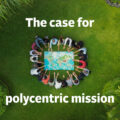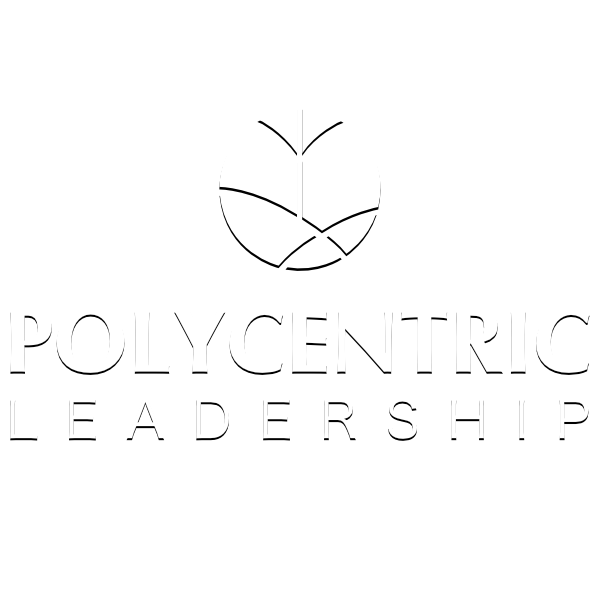GUEST POST BY MICHEL BAUWENS
P2P and the Commons – General Introduction
Peer-to-peer social processes are bottom-up processes whereby agents in a distributed network can freely engage in common pursuits, without external coercion.
It is important to realize that distributed systems differ from decentralized systems, essentially because in the latter, the hubs are obligatory, while in the former, they are the result of voluntary choices.
Distributed networks do have constraints, internal coercion, that are the conditions for the group to operate, and they may be embedded in the technical infrastructure, the social norms, or legal rules.
Despite these caveats, we have here a remarkable social dynamic, which is based both on voluntary participation in the creation of common goods, which are made universally available to all.
Peer-to-peer processes are emerging in literally every cranny of social life, and have been extensively documentation in the 5,000+ pages of documentation at the Foundation for Peer to Peer Alternatives, and many other places on the Web.
P2P social processes more precisely engender:
- peer production: wherever a group of peers decided to engage in the production of a common resource
- peer governance: the means they choose to govern themselves while they engage in such pursuit
- peer property: the institutional and legal framework they choose to guard against the private appropriation of this common work; this usually takes the form of non-exclusionary forms of universal common property, as defined through the General Public License, some forms of the Creative Commons licenses, or similar derivatives
These new property forms have at least three characteristics:
- they are aimed against the private appropriation of the commonly created value
- they are aimed at creating the widest possible usage, i.e. they are universal common property regimes
- they keep the sovereignty with the individual
The third aspect is why peer property fundamentally differs both from private property and collective property.
Private property is individual but is exclusionary, it says, what is mine is not yours.
But state, that is collective property, is also exclusionary, but in another sense: it says, it is ours, but it means that you no longer have the sovereignty. It’s from us, regulated by a bureaucracy or representative democracy, but it is not really yours.
The collective has taken over from the individual, and more often than not, coercion is involved.
But the General Public License, or the Creative Commons licenses are different.
Common property is not collective property.
Using them, the individual gets full attribution, i.e. the recognition of his personal property. You are freely sharing your sovereignty with others.
This is especially clear in the Creative Commons licensing schemes, where the individual gets a whole gamut of options for sharing. You remain fully in control, i.e. “sovereign”, and there is no coercion involved.
It is important to note that peer production is a form of “generalized”, on non-reciprocal, exchange. It is not a gift economy, based on direct exchange or obligation. So peer production is not to be equated by cooperative production for the market: participation has to be voluntary, there is no direct reward (but many indirect rewards) in the form of monetary compensation.
The process itself is participative.
And the outcome is similarly free, in the sense that anyone can access and use the common resource. In reality, most peer production projects are intertwined with a smaller core of people who may get paid, and use finances to create an infrastructure so that the peer production may occur.
The conditions for peer production to emerge are essentially: abundance and distribution.
Abundance refers to the abundance of intellect or surplus creativity, to the capacity to own means of production with similar excess capacity. Distribution is the accessibility of such abundant resources in fine-grained implements, Yochai Benkler has called modularity or granularity. Again we could talk about the distribution of intellect, of the production infrastructure, of financial capital.
It is important to distinguish two spheres.
In one sphere, our digitally-enabled cooperation, reproduction of non-rival knowledge goods, such as software, content, open designs, takes place at marginal costs, and not only there is no loss by sharing, but there is actually a gain, through network effects.
Such free cooperation can only be hindered ‘artificially’, through either legal means (intellectual property regimes) or through technical restrictions such as Digital Rights Management, which essentially hinder the social innovation that can take place. In this sphere, a non-reciprocal mode of production becomes dominant, since resources are not rival, and you’re not losing, but gaining, through giving.
In the sphere of material production, where the costs of production are higher, and we have rival goods, we still require regimes of exchange, or regimes of reciprocity. Notice that in a sphere of virtual abundance, where copying is trivial, there is no tension between supply and demand, and hence no market.
Peer production, though embedded in the current political economy and essential for the survival of the cognitive forms of capitalism, is therefore essentially post-capitalist. Essentially because it is outside wage dependency, outside the control of a corporate hierarchy, and does not allocate resources according to any pricing or market mechanism.
Peer governance is post-democratic, because it is a form of governance that does not rely on representation, but where participants directly co-decide; and because it is not limited to the political field, but can be used in any social field. Peer governance is non-representational, and this is essentially so because what the networked communication affords us, is the global coordination of small groups, and therefore, the peer to peer logic of small groups can operate on a global scope.
Hierarchies, the market, and even representative democracy, are all but means to allocate scarce resources, and do not apply in the context where abundant resources are allocate directly through the social process of cooperation. However, since the pure peer to peer logic only fully functions in the sphere of abundance, it will always have to insert itself in the forms that are responsible for the allocation of resources in the sphere of material scarcity.
Peer governance-based leadership seems a combination of invitational leadership, i.e. the capacity to inspire voluntary cooperation, and a posteriori arbitrage based on the reputational capital thus obtained. However, the process of production itself is an emergent property of the cooperating networks.
Peer property is a post-capitalist form of property because it is non-exclusionary, and it creates a commons with marginal reproduction costs.
There are two main forms of peer property.
One is based on the individual sharing of creative expression, and is dominated by the Creative Commons option which allows an individual to determine the level of sharing.
The other is applied to commons-based peer production, and takes the form of the General Public License or its derivatives or alternatives, and requires that any change to the common, also belongs to the common.
2. The Conditions for the Expansion of Peer Production
Peer production naturally occurs in the sphere of immaterial production. In this sphere, the access to distributed resources is relatively easy.
Large sections of the population in the Western countries are educated, and can have a computer at their disposal. And the costs of reproduction are marginal.
The expansion of peer production is dependent on cultural/legal conditions. It requires;
- open and free raw cultural material to use;
- participative structures to process it;
- and commons-based property forms to protect the results from private appropriation.
Hence is a circulation of the common obtained (the concept is from Nick Dyer-Whiteford), through which peer production virally expands.
However, peer production is not limited to the sphere of immaterial production.
Physical resources can be shared, if they are available in a distributed format.
For example: computers and their files and processing power. Cars can be pooled. Money can be pooled as in the P2P financial exchanges such as Zopa or Prosper. Desktop manufacturing and personal fabricators may lower the threshold of participation, creating more modularity and granularity in newer fields. In fact, we may observe that the same tendency to miniaturization, which led to the networked computer, is taking place in the domain of physicial machinery. Coupled with the energy crisis and a dwindling natural resource base, this will most likely lead, in the coming decades, to a new equilibrium that favors relocalized production.
For processes where physical production requires access to centralized financial capital, for example the production of cars, it is entirely conceivable to split the immaterial design phase from the physical production space.This is already being applied by for profit entities. Innocentive is an early example of this. In fact, in reference to the above, it is entirely possible to conceive of the growth of a combination of global-local open design communities, with a built-only capitalism in terms of physical production.
Finally, the relationship between physical objects, logical space, and digital identifiers may be changed, so as to promote commons-based approaches. The white-bicyle experiment in Amsterdam failed, because the scarce physical resource, the bikes, could not be tracked and protected. But commons-owned bicycles can be tracked through RFID.
In fact, there is now a thriving field of social cooperation, which some call the adventure economy, emerging for the sharing of physical goods.
Such expansion is not just a natural extension of technical evolution, but has structural and therefore political impediments. The centralized capital formats of contemporary neoliberal anti-markets obviously impede such expansion. But even with such constraints, the scope for the expansion of peer production is significant.
Again, we will make the following caveat. In the immaterial sphere, non-reciprocal peer production is likely to become dominant. In the field of scarcity, we will see the rise of peer-informed modes of production.
This means that markets forms are starting to change, changing from a logic of pure capitalism (making commodities for exchange, so as to increase capital), to logics where the logic of exchange is subsumed to the logic of partnership.
Think about fair trade (a market subjected to peer arbitrage), social entrepreneurship (profit used to sustain social goals), the base of the pyramid of inclusional capitalism, and the many political-social movements that aim to divorce market forms, from the infinite growth logic of capitalism, such as the natural capitalism movement in the U.S.
3. Adaptation of Cognitive Capitalism to Peer to Peer
Peer production, governance and property are more productive economically, politically, and in terms of distribution, than their governmental and for-profit counterparts, because they filter out all the less productive forms of motivation and cooperation, and retain only passionate production and intrinsic motivation.
In most cases, distribution beats decentralization and centralization as the best way to deal with complexity. In many cases, distributed systems will adapt centralized and decentralized features that will make participation more efficient.
This creates the law of asymmetric competition, which says that any for-profit entity, using closed proprietary formats and no participation, will tend to lose out to for-benefit institutions that can draw on communities.
Think Explorer vs. Firefox. As a corollary, any for-profit entity (and any nation in its public policies), which adapts open/free, participatory, and commons-oriented elements (as do the open source software companies), will have key advantages as well. This ensures the social adoption of peer to peer logics in the core of our economy.
So far, empirical evidence suggests three emerging forms of adaption between the sphere of peer to peer cooperation, and the institutional and market fields.
- The sphere of individual sharing, think YouTube, where sharers have relatively weak links to each other, creates the Web 2.0 business model. In this model, an ethical economy of sharing, co-exists with proprietary platforms which enable and empower such sharing, in exchange for the selling of the aggregated attention
- The sphere of commons-oriented peer production, based on stronger links between cooperators, think Linux or Wikipedia, usually combines a self-governing community, with for-benefit institutions (Apache Foundation, Wikimedia Foundation, etc…), which manage the infrastructure of collaboration, and a ecology of businesses which create scarcities around the commons, and in return support the commons from which they derive their value.
- Finally, crowdsourcing occurs when it is the institutions themselves which attempt to create a framework, where participation can be integrated in their value chain, and this can take a wide variety of forms. This is generally the field of co-creation.
We must note that monetary value that is being realized by the capital players, is – in many if not most of the cases, not of the same order as the value created by the social innovation processes.
The user-producers-participants are creating direct use value, videos in YouTube, knowledge and software in the case of commons-oriented projects. This use value is put in common pool, freely usable, and therefore, does not consist of scarce products for which pricing can be demanded.
The sharing platforms live from selling the derivative attention created, NOT the use value itself. In the commons model, the abundant commons can also not be directly marketed, without the creation of additional ‘scarcities’.
What does all of this mean for the market sphere?
It is now possible to create all kinds of use value without, or with only a minimal, intervention of capital.
a) We are dealing with post-monetary, post-capitalist modes of value creation and exchange, that are both immanent, i.e. embedded, to the market, but also transcendent to it, i.e. operating outside its boundaries.
b) Capital is increasingly dependent, and profiting in all kinds of ways, from the positive externalities of such social innovation.
c) The full , partial, or hybrid peer production models that we discuss above, may be collectively sustainable as value creation processes, but do not offer a direct solution for the income and survivability of the participants.
So the challenge can be described as follows:
- we have a process of social innovation which creates mostly non-monetary value for the participants;
- we may have an increasingly huge gap between the possibility of creating post-monetary value, and the derivative exchange values that are realized by enterprise;
- the participants engaged in such passionate production and innovation, mostly cannot find in such processes an answer to their own sustainability.
Hence, the impossibility to realize more than just a small partial monetary value, from the point of view of most commercial players. Increasing precarity for the participants of social innovation. In other words, the current market model does not seem to have yet a reverse process of redistribution for the value that is being created.
This might of course be a temporary crisis, but I do not believe it is.
The reason is that the market can only indirectly and partially provide monetary compensation for processes which are not motivated by such compensation. What we need therefore are more general redistributive processes that allow society and the market to give back part of the value that is being so created.
One possibility is the further development of transitional labour market measures (protect the worker, not the job), which recognize the flexibility and mobility of contemporary careers. But this needs an important add-on development: the realization that contemporary workers are moving not just from job to job, but also from jobs to non-jobs, and that in fact, what is most useful and meaningful for them (and the market, and society) are not the paid jobs for the market, but the episodes of passionate production.
It seems to me therefore that a more general measure, not linked to the job, but conceived as a repayment for, and enabler of, social innovation, is needed. The name of that general measure is most probably some form of basic income.
4. The Conditions for the Expansion of Peer Governance
Peer governance functions because peer production is the macro-scale coordination of a large number of micro-production teams.
Within the teams, decision-making is participative and consensual, and the global coordination is voluntarily accepted and today technically feasible. Small tribes, the victims of civilizational hierarchies, are re-enabled in the new format of affinity-based cyber-collectives.
Positively, peer governance expands the sphere of autonomy-in-cooperation to all social fields. Its promise is that production becomes a non-hierarchical process. But as I said earlier, peer governance is ‘post-democratic’ because it is non-representational.
The negative constraint is the following: peer governance requires a priori consensus on the common object. But society as a whole lacks such consensus by definition: it is a decentralized collection of competing interests and worldviews, rather than a distributed network of free agents. Therefore, for society at large, there is no alternative to a revitalized democratic political scenario based on representation.
However, just as the market can inspire itself and be reformed by P2P or partnership-based principles (as in the fair tradethat is subjected to peer arbitrage), so we can have peer-informed formats of multi-stakeholder based global governance. And in any case, the sphere of autonomy, i.e. of pure governance, can substantially expand even within the structures of democratic government.
End of Part 1
Part 2: Peer-to-Peer Governance, Democracy And Economic Vision: P2P As A Way Of Living
More Information
Originally written by Michel Bauwens and first published by Master New Media as “Peer-to-Peer Governance, Production And Property: P2P As A Way Of Living – Part 1”
To learn more about P2P Leadership, try this site: https://wiki.p2pfoundation.net/Leadership
Photo by Jordy Meow on Unsplash
About the author
Michel Bauwens (1958) is a Belgian integral philosopher and Peer-to-Peer theorist. He has worked as an internet consultant, information analyst for the United States Information Agency, information manager for British Petroleum(where he created one of the first virtual information centers), and is former editor-in-chief of the first European digital convergence magazine, the Dutch language Wave. With Frank Theys, he is the co-creator of a 3 hour documentary TechnoCalyps, an examination of the ‘metaphysics of technology’. He taught and edited two French language anthologies on the Anthropology of Digital Society.
Although a student of Ken Wilber‘s integral theory for many years, he has recently become critical of aspects of the Wilber-Beck movement, and is a powerful voice for a non-authoritarian peer-to-peer based integral society.
Michel is the author of a number of on-line essays, including a seminal thesis Peer to Peer and Human Evolution, and is editor of P2P News
He now lives in Chiang Mai, Thailand, where he created the Foundation for P2P Alternatives and maintains a blog.
He has taught courses on the anthropology of digital society to postgraduate students at ICHEC/St. Louis in Brussels, Belgium and related courses at Payap University and Chiang Mai University in Thailand.
Michel Bauwens
Originally found via: https://wiki.p2pfoundation.net/Category:Peergovernance with the following quote:
“Peer to peer social processes are bottom-up processes whereby agents in a distributed network can freely engage in common pursuits, without external coercion. It is important to realize that distributed systems differ from decentralized systems, essentially because in the latter, the hubs are obligatory, while in the former, they are the result of voluntary choices. Distributed networks do have constraints, internal coercion, that are the conditions for the group to operate, and they may be embedded in the technical infrastructure, the social norms, or legal rules.
P2P social processes more precisely engender:
1) Peer Production: wherever a group of peers decided to engage in the production of a common resource
2) Peer Governance: the means they choose to govern themselves while they engage in such pursuit
3) Peer Property: the institutional and legal framework they choose to guard against the private appropriation of this common work; this usually takes the form of non-exclusionary forms of universal common property”










